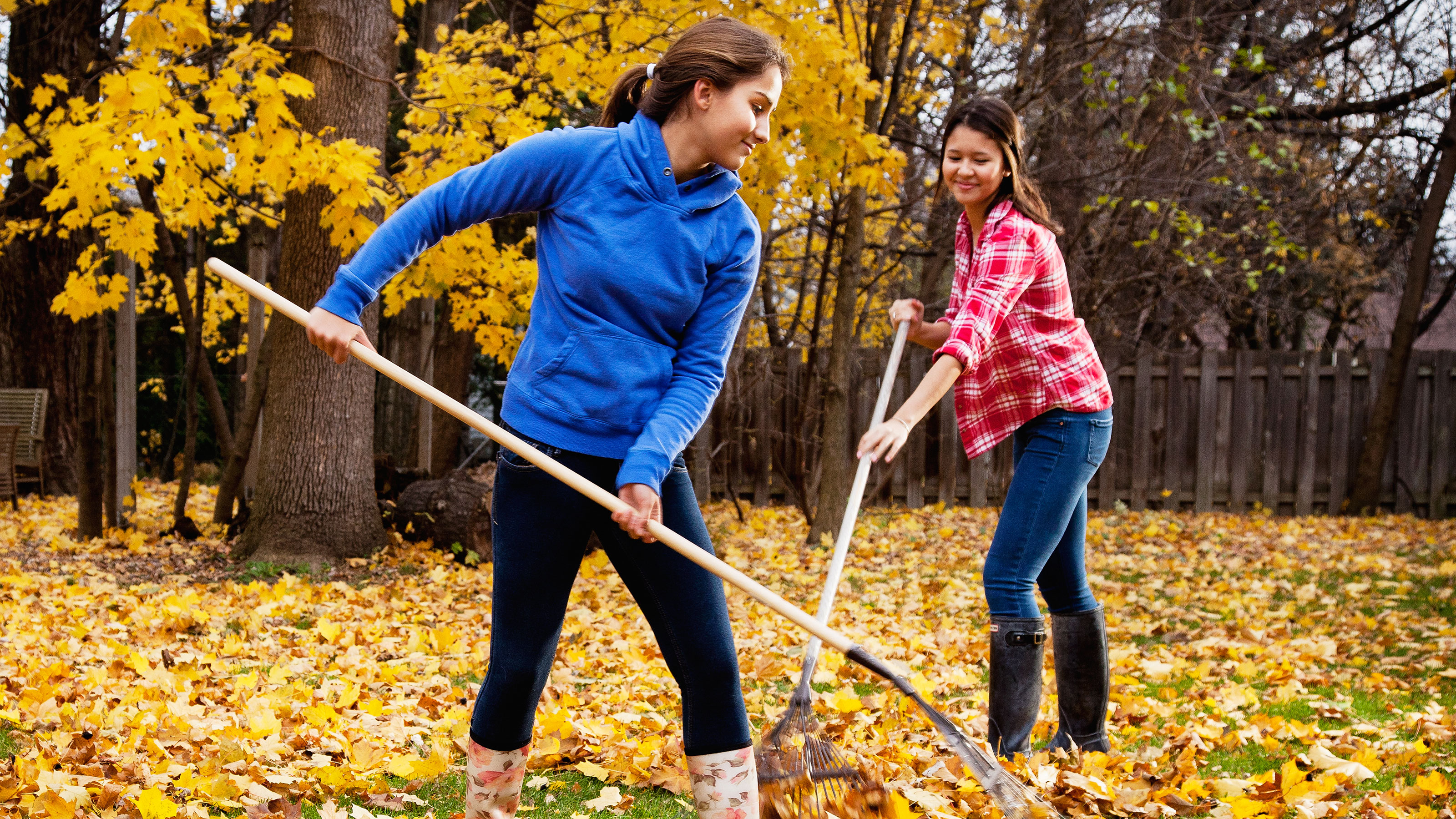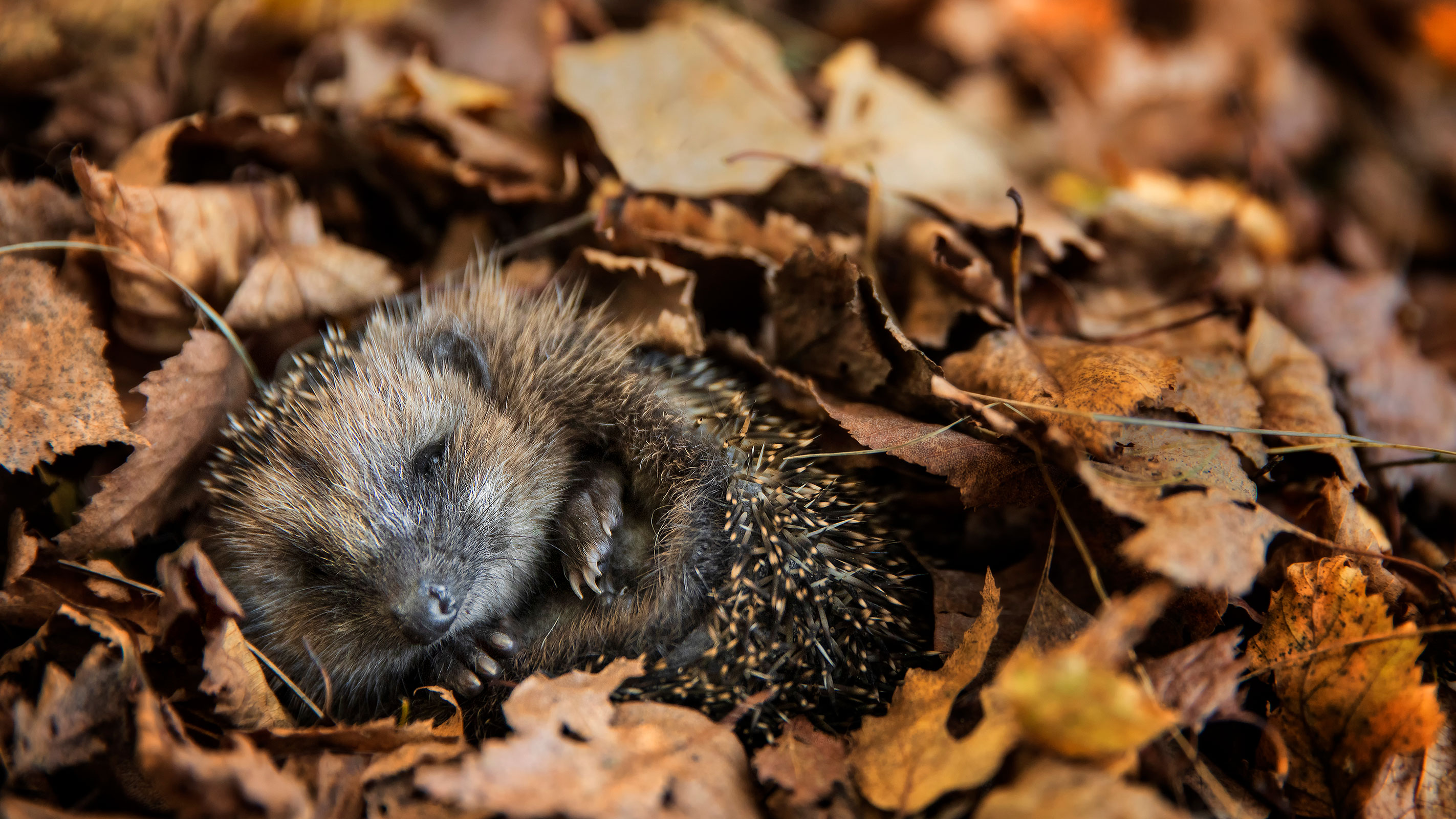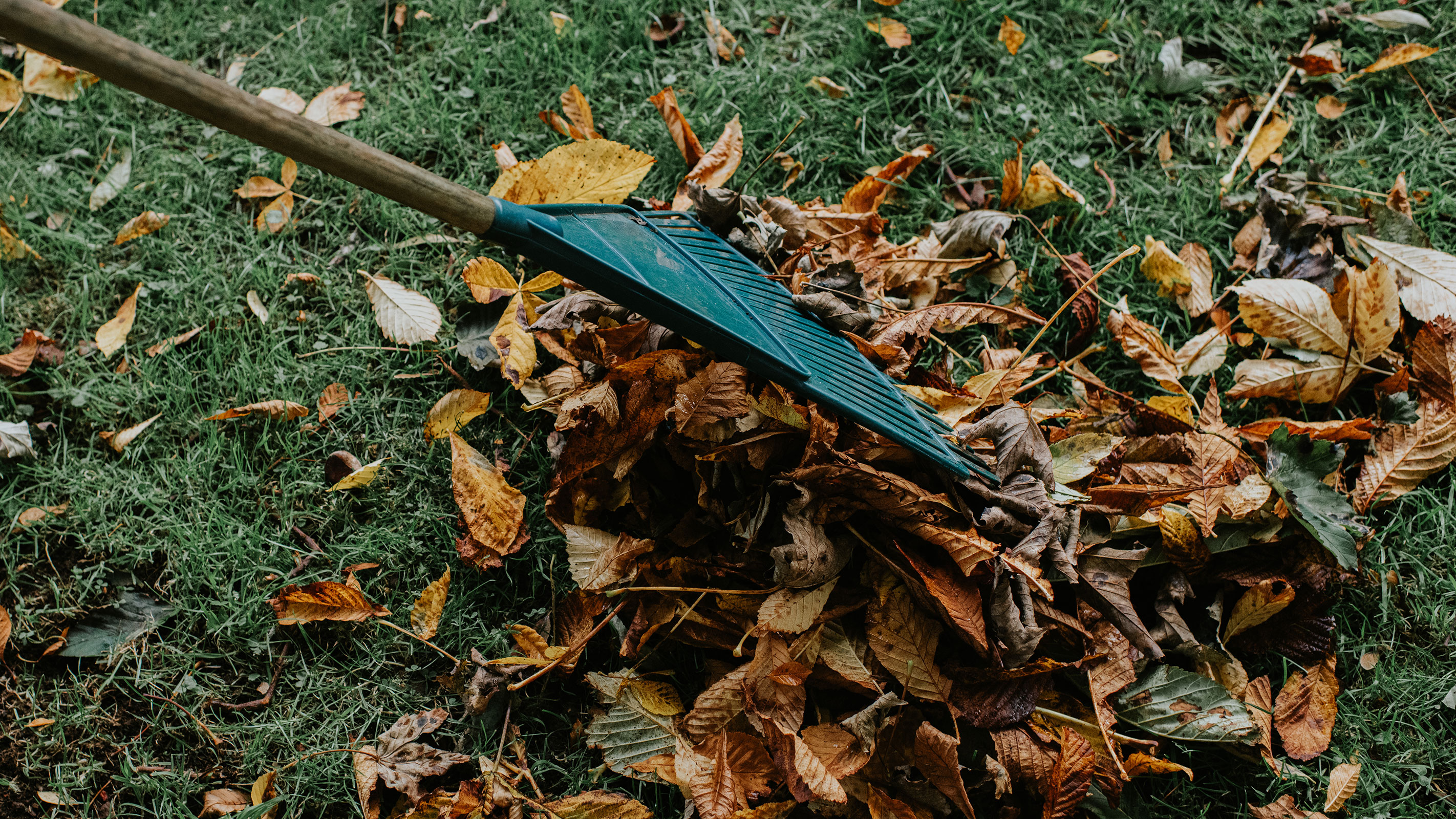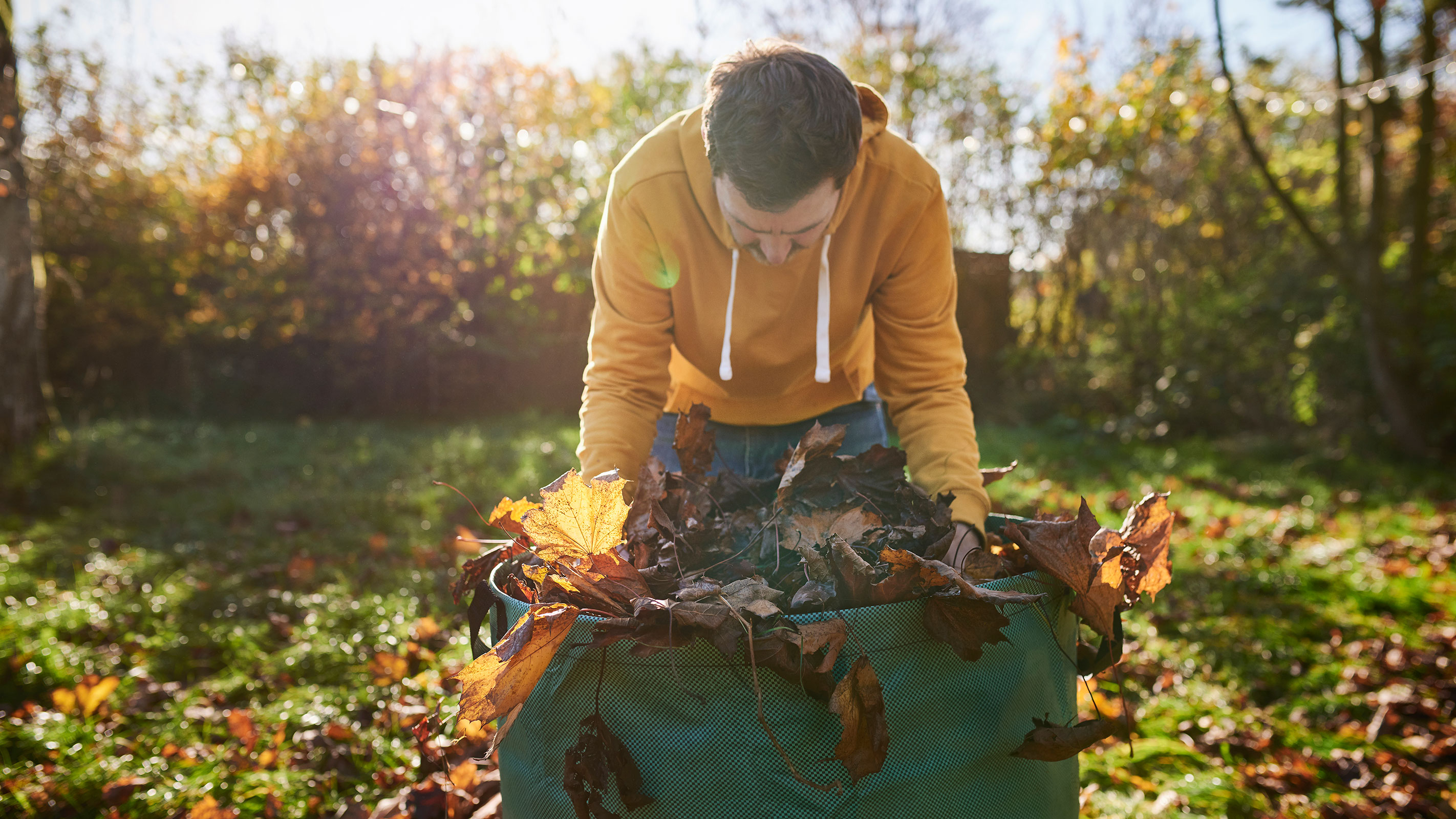We debunk the leaves on lawn question and ask if it is actually good for your grass
Leaves on lawns can often cause homeowners a few headaches — is letting them settle and sit on your grass beneficial or should you rake them up as soon as possible? We asked the experts

There have been rumours circulating lately that leaves on lawns are a good thing that can actually be beneficial for your grass — but is there any truth to be found in this belief?
While a blanket of leaves covering your garden might do nothing appearance-wise for your beautiful lawn ideas, some people believe they can do the grass good, feeding it with nutrients over the colder months. Others dismiss this idea, insisting that it is far better to pull out the rake and get rid of them as quickly as possible.
To leave or or not to leave? That is the question. For this article, we asked the experts for their opinion on the matter to get to bottom of the debate once and for all.
Leaves on lawn: Friend or foe?
They might not look great, but can fallen leaves ever be of any benefit to the grass and soil underneath?
"Trends come and go, but good advice is here to stay. The latest trend is a belief that leaving leaves on a lawn is a good idea," says David Hedges Gower, chairman of Lawn Association. "However, most of us want a nice, sustainable lawn for as much of the year as possible, and the advice for those people is to get leaves up as quickly as they fall down.
"You never find a great lawn in a forest and that’s because trees and leaves will often win that battle," continues David. "That said, with a small bit of intervention, we can make that journey through the winter months a lot easier for our grass."
In a natural setting, leaves may contribute to the richness of the soil over time, but lawns, carefully cultivated for aesthetic appeal, require a different approach. Without intervention, the trees and leaves could overpower the grass, leaving behind a less-than-desirable landscape.
So is it all bad news for those who were hoping their lawn could look even better in the spring if they let the leaves break down naturally?
"As much as leaves will give food for worms, the end result will just be a thin mud bath on your lawn," explains David "Plants don’t photosynthesise much during winter months and leaves on the lawn will lessen that further. They create a warm, damp environment under the leaf which leads to grass dying off — and this disease can happen in 24-48 hours."
That said, there are a few benefits to letting leaves sit in some areas of your garden. Piles of collected leaves will provide a habitat for overwintering animals, such as hedgehogs, for example.

How often should you rake up leaves?
It seems that the advice is to get rid of those leaves on your lawn as soon as possible, but is there any guidance on how often you should be raking your lawn? Although there are no hard and fast rules about how frequently leaves should be cleared up, the more often it's done, the better.
"Clearing regularly can result in more than 50% grass cover going into Spring," says David.
The advice is generally to clear the leaves from your grass as soon as they begin to cover it over although how often you will need to do this will depend on the type and quantity of trees you have in your garden, the outside temperature and the weather conditions.
How should you remove fallen leaves?
While raking your lawn is the first thing that usually comes to mind when it comes to removing leaves from your grass, there are other methods to consider.
Other ways to collect leaves include using a leaf blower. The MYLEK Cordless Leaf Blower from Amazon is currently on offer with 30% off. Leaf vacuums can be used to suck up piles of leaves — something like the highly-rated VonHaus Leaf Blower and Vacuum from Amazon would be ideal for those keen to take this approach.
In fact, no tools at all are really needed to collect leaves efficiently. You could just use two flat boards in either hand to scoop up large piles of leaves.
If you have many leaves to collect or a large garden, you can use a mower to collect them. But when is the best time to cut grass in winter?
"Before each mowing session, be sure to check for any snow or frost on the ground," says Nick Wood, the horticulturalist of Gardening Express. "If you see any present, wait until it melts before mowing, but ensure that the ground is not too soft or water logged. Make sure that the temperature outside is at least 5°C so that your grass can fully benefit from the trimming and stay healthy throughout the winter months."
You should also take care to use the right kind of mower.
"Choose a lawn mower over winter that doesn’t have a roller," says David. "Apart from adding compaction, it can smear worm casts as well as increase the chance of moss."

What can fallen leaves be used for?
Do be sure to make use of the leaves you collect as leaf litter is a good source of free organic matter that can be used to replenish the garden.
If you are a keen composter, you can add your gathered leaves to your compost heap — this is a great way to enhance lots of green material such as grass cuttings. Alternatively, you could use them to make leaf mould which is brilliant at improving soil when mixed in. It can also be used as mulch. Leaf mould will really benefit shrubs. trees and any bulbs you have planted, ready for spring.

Which areas can you pile up fallen leaves?
So, while letting leaves sit all winter on your carefully manicured lawn might not be such a good idea, are there any areas of the garden that could benefit from a covering of leaves?
According to the RHS, it is fine to let leaves lie where they fall in orchards. They can also be left to rot down in shady, woodland areas should your garden landscaping ideas incorporate any — or even at the back of your borders.
How do you make leaf mould?
If you are keen for your gathered leaves not to go to waste, you will be pleased to hear that making leaf mould is not a tricky job — although it does require a degree of patience.
You should place your collected leaves into a bin bag, tied loosely at the top. Next, carefully punch holes in the sides and, if the leaves are very dry, add a little water. You then need to leave them out of the way and wait for between 12-18 months for them to break down.
According to the RHS, oak, beech and hornbeam are amongst the best leaves for leaf mould. work best. Plane and horse chestnut leaves are thicker and so take longer to break down, although shredding them can help expediate the process. They say to avoid evergreen laurels and holly and suggest that pine needles are an ideal mulch for acid-loving plants when decayed — although they take a long time to do so.

David Hedges-Gower is the UK's most trusted lawn expert. He is the chairman of The Lawn Association, an educational platform for homeowners, professionals and media. In addition, David has recently launched True Garden Range, the worlds first 2-in-1 fertilisers and soil conditioners, made from composted recycled food waste.
Get the Homebuilding & Renovating Newsletter
Bring your dream home to life with expert advice, how to guides and design inspiration. Sign up for our newsletter and get two free tickets to a Homebuilding & Renovating Show near you.
Natasha was Homebuilding & Renovating’s Associate Content Editor and was a member of the Homebuilding team for over two decades. In her role on Homebuilding & Renovating she imparted her knowledge on a wide range of renovation topics, from window condensation to renovating bathrooms, to removing walls and adding an extension. She continues to write for Homebuilding on these topics, and more. An experienced journalist and renovation expert, she also writes for a number of other homes titles, including Homes & Gardens and Ideal Homes. Over the years Natasha has renovated and carried out a side extension to a Victorian terrace. She is currently living in the rural Edwardian cottage she renovated and extended on a largely DIY basis, living on site for the duration of the project.

